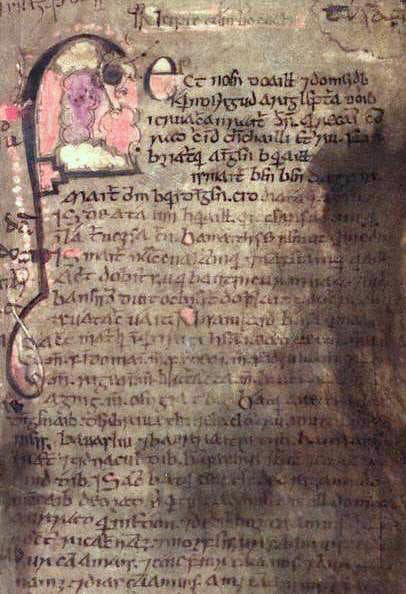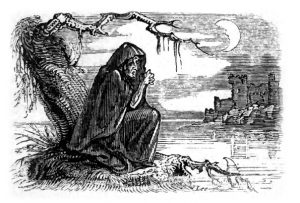There is something deeply enchanting and romantic about Irish mythology. Perhaps it’s the themes of nature or maybe that it takes our imagination to an Ireland where Kings and Queens ruled the land and fairies and banshees hid amongst us. Whatever it is, Irish Mythology continues to allure and captivate new generations.
Irish mythology consists of four different cycles: the Mythological Cycle, the Ulster Cycle, the Fenian Cycle, and the Historical Cycle.
Most Irish myths will fit into one of these cycles. Each one is set in different time in Ireland and features various historical characters and legendary figures. Some of the earlier cycles reflect a pagan Ireland with heavy supernatural themes, whereas later cycles are more historically accurate. Let’s take a look at each one.

The Mythological cycle is the earliest cycle and the stories contain more magical themes. The Book of Invasions forms the major part of the Mythological Cycle. It is actually one of the oldest collections of stories and poems in history.
The Children of Lir is the best known story from the mythological cycle. Lir, a King and widow remarries a woman who becomes stepmother to Lir’s four beloved children. Jealous of his affection for them she casts a spell, turning them into swans for nine hundred years. Only the sound of a Christian bells can break the spell. When their father found out he banished his wife and spent the rest of his days with them. After nine hundred years when they heard the bells they transformed back but were so very old. When they told their sad story to a holy man, and he baptised them before they died, and they joined their mother and father in heaven.

The Ulster cycle is set around the first century and features stories of the great Irish hero Cú Chulainn and Conchobar mac Nessa, King of Ulster.
The Táin is one of the most well-known Irish Legends and is sometimes called The Cattle Raid of Cooley. When Queen Medb of Connacht and her husband Ailill compare their riches, Medb grows jealous believing her husbands fortune to be greater than hers because of his great white bull. She requests to borrow the Brown Bull of Cooley for one year in exchange for fifty cows and some land. Daire of Cooley accepts but before he gives her the bull he overhears that she had plotted to take the bull by force had he not accepted. Out of defiance he refused to give it to her and so began the cattle raid of Cooley.
The Fenian cycle. The Fenians were followers of the mythical hero Fionn mac Cumhaill. Fenian myths often tell stories of Fionn and the Fenians in their adventures, most of which take place in the provinces of Leinster and Munster.
Perhaps the most well-known Fenian myth is the Salmon of Knowledge. A young Fionn mac Cumhaill lives with his tutor Finegas, who has spent years in search of the Salmon of knowledge. The magical fish is thought to contain all the wisdom of the world and he who consumes it will gain the knowledge. Finegas eventually catches the salmon and instructs Fionn to watch over it while he sleeps. As it cooked, Fionn accidentally tastes the salmon when he burns his thumb and sucks it. When Finegas arises he was see in Fionns eyes that he has acquired the knowledge of the magical fish. Although he is disappointed he is also happy for him and encourages him to become a good leader with all of his wisdom.
The Historical cycle takes place after Christianity came to Ireland. The stories are more factual than supernatural and the tales contain stories of Kingship. The battle of Clontaf falls into the Historical, where high king of Ireland Brian Boru led an army to defeat the Vikings and drive them out. Against all odds they were victorious, but he lost his life on the battlefield.
Irish mythology keeps us in touch with our ancient past. Our history of storytelling and scripture has allowed these stories and legend to be preserved and remains a source of artistic inspiration today.


